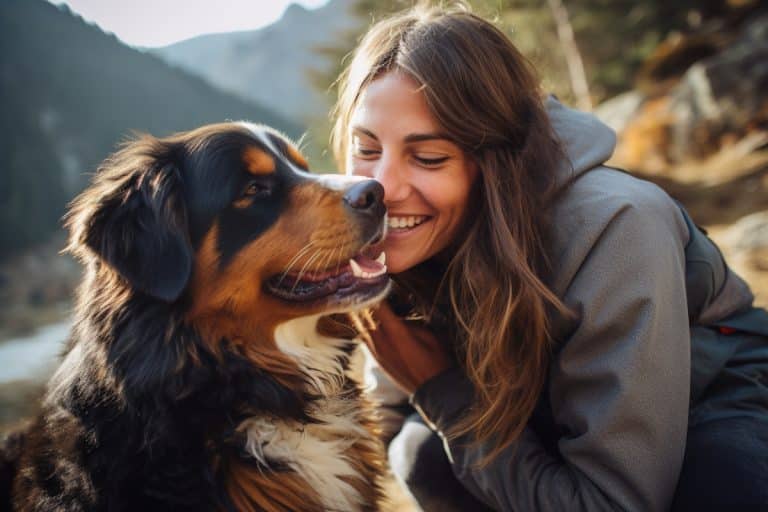Owning a Bernese Mountain Dog can be a joy. These dogs are known for their friendly nature and stunning long, silky fur. But with this beautiful fur, comes a little challenge – shedding. If you are considering bringing a Bernese Mountain Dog into your home, or if you already have one, it’s good to know what to expect when it comes to shedding.
Understanding Shedding in Dogs
Shedding is a natural process where dogs lose old or damaged hair. Just like humans lose a few strands of hair every day, dogs shed too. However, the amount of shedding can vary widely from one breed to another. Some factors affecting shedding include the breed’s genetics, the season of the year, and the dog’s overall health.
How Much Do Bernese Mountain Dogs Shed?
Bernese Mountain Dogs are known to be heavy shedders. Their thick, long fur is surely beautiful, but it tends to shed quite a bit. It’s not unusual to find tufts of fur around your home, on your furniture, and pretty much everywhere else! During certain seasons, the shedding can increase, and you might find yourself needing to clean up fur more frequently.
When Do Bernese Mountain Dogs Shed?
The shedding season of Bernese Mountain Dogs, and many other breeds, is often triggered by changes in daylight and temperature as the seasons transition from winter to spring and from summer to fall.
Change in Daylight
As the days get longer or shorter, the amount of daylight changes, and this can signal to your Bernese Mountain Dog’s body that it’s time to shed their old fur and possibly grow a new coat. This natural response helps them adjust to the changing weather conditions. For instance, shedding the dense winter coat is essential to help them stay cool as the temperatures rise in spring and summer.
Temperature Changes
The change in temperature is another trigger for shedding. As the weather warms up, your Bernese Mountain Dog doesn’t need that thick, warm coat anymore, so they shed it. Conversely, as the temperature drops in the fall, they may shed their lighter summer coat to make way for a thicker, warmer coat for the winter.
Hormonal Changes
Sometimes, hormonal changes can also play a role in shedding. For example, female dogs might shed after going through a heat cycle or after giving birth.
Health and Nutrition
Although not directly related to the shedding season, the overall health and nutrition of your Bernese Mountain Dog can also affect their shedding patterns. A healthy, well-fed dog will have a healthier coat, which might shed less outside of the normal shedding seasons.
Understanding these triggers can help you anticipate when your Bernese Mountain Dog is likely to shed the most and prepare accordingly. Regular grooming, a balanced diet, and keeping your dog healthy will also contribute to managing their shedding year-round.
Why Is My Bernese Mountain Dog Shedding So Much?
Sometimes, you might notice your Bernese Mountain Dog shedding more than usual. This could be due to seasonal changes, as mentioned earlier. However, excessive shedding can also be a sign of other issues like health problems or inadequate nutrition. It’s important to provide a balanced diet to ensure your dog’s coat remains healthy. If you’re concerned about the amount of shedding, it might be a good idea to consult with a veterinarian to rule out any underlying health issues.
Grooming Tips for Managing Shedding
Regular grooming can help manage shedding and keep your Bernese Mountain Dog looking beautiful. Here are some tips:
- Brush your dog daily to remove loose hairs and prevent tangles.
- Use high-quality dog food to ensure your dog is getting the nutrients necessary for a healthy coat.
- Provide plenty of fresh water to keep your dog’s skin and coat hydrated.
- Consider using a de-shedding tool, which is designed to reach down into your dog’s coat and remove loose hairs before they fall out.
Grooming not only helps with shedding but also provides the opportunity to check your dog for signs of skin problems, ticks, or other issues that might require attention.
Health Benefits of Regular Grooming
Regular grooming is not just about managing shedding; it’s about promoting a healthier coat and skin. Grooming allows you to check your dog for signs of health issues like skin infections, lumps, or parasites. It also helps to distribute natural oils produced by your dog’s skin, which keeps their coat shiny and healthy. Plus, grooming can be a bonding experience between you and your furry friend, making it a win-win situation!
Conclusion
Shedding is a part of life with a Bernese Mountain Dog. Though it might seem overwhelming at times, with the right grooming routine, it’s manageable. By understanding the shedding cycle, and with regular grooming, you can ensure your Bernese Mountain Dog remains healthy, and your home stays relatively fur-free. So, embrace the grooming routine, enjoy a happy, healthy companionship with your furry friend, and don’t let the fur drive you barking mad!








